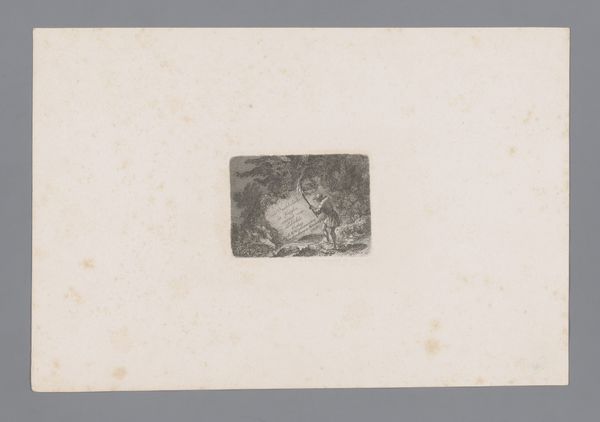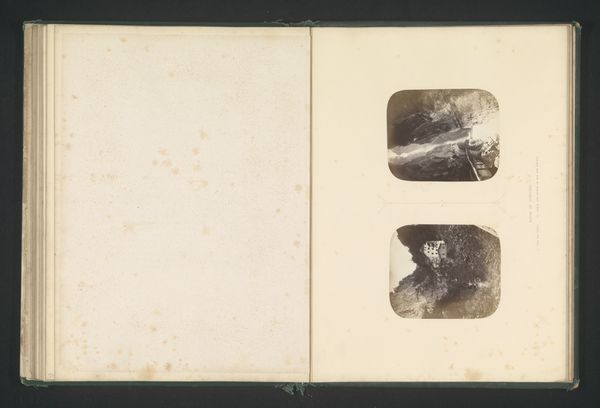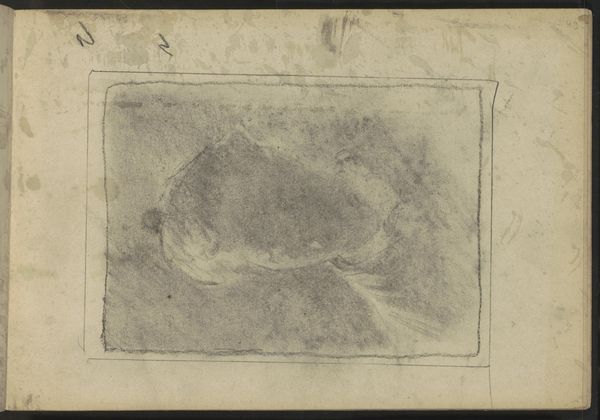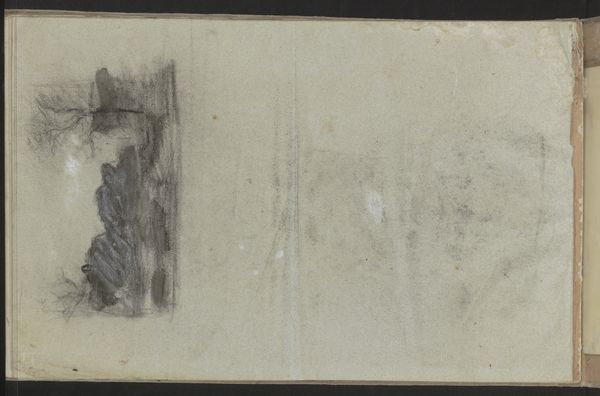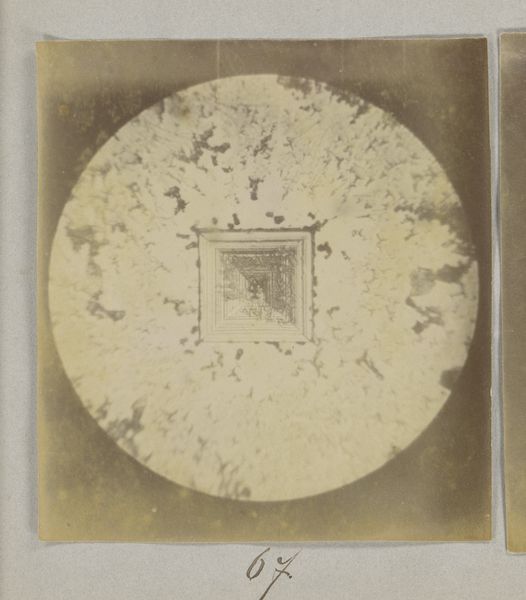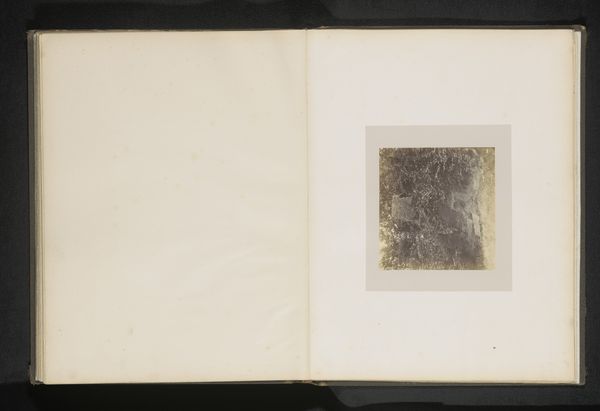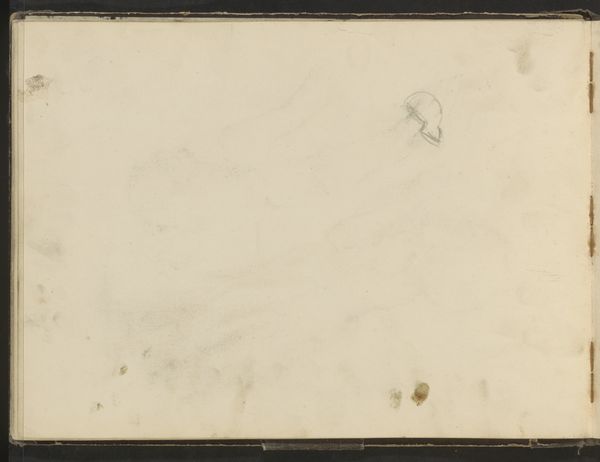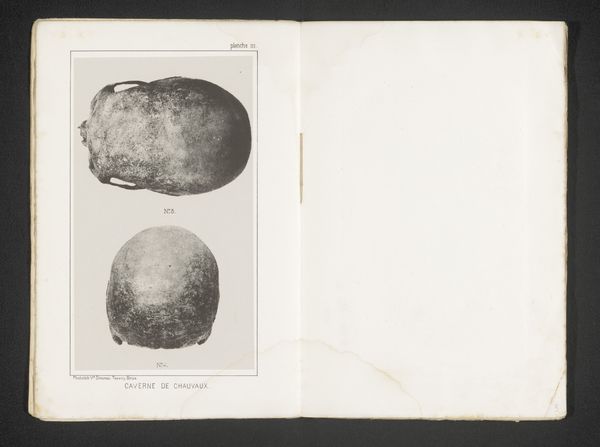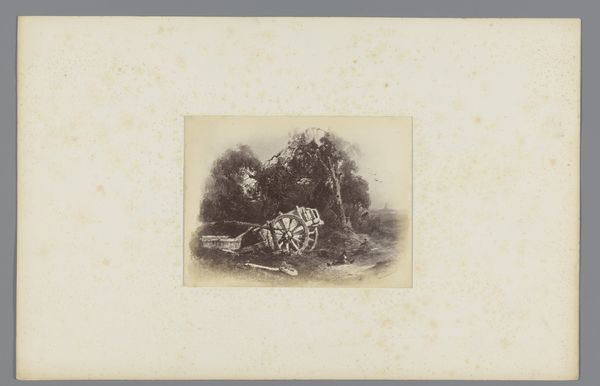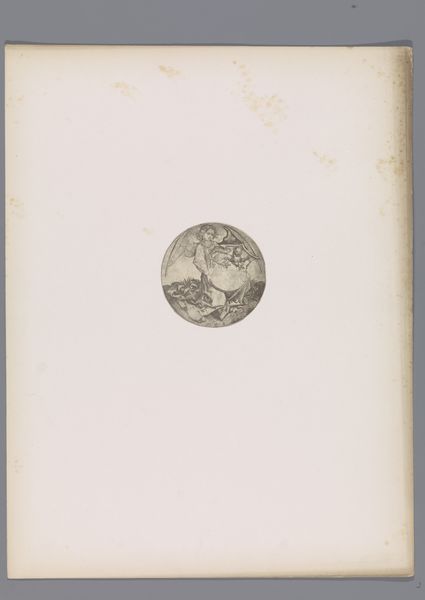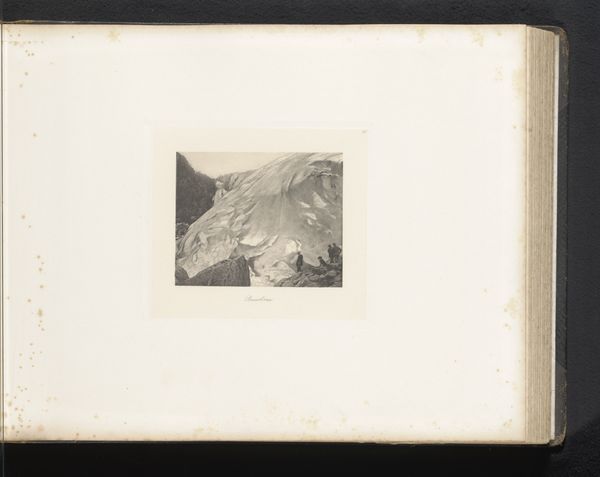
Fotoreproductie van het schilderij 'Het kasteel' door Johannes Hilverdink before 1871
0:00
0:00
Dimensions: height 182 mm, width 143 mm
Copyright: Rijks Museum: Open Domain
Curator: Welcome to the Rijksmuseum. Before us, we have a rather evocative piece entitled "Fotoreproductie van het schilderij 'Het kasteel' door Johannes Hilverdink," a gelatin-silver print made before 1871. Editor: It has an ethereal feel, almost like looking at a memory fading at the edges. The dark foliage frames a pale structure, hinting at stories hidden behind stone walls. Curator: It's quite fascinating how a photograph reproduces a painting, especially considering the implications of mass production even then. The use of gelatin-silver printing enabled wider distribution and thus broader access to Hilverdink's original landscape, albeit mediated through a photographic lens. Editor: Absolutely, and look at how the artist stages the castle as this kind of isolated monument. The image’s oval format—emphasized by a frame of twisted branches and faded leaves—feels weighty with symbols of mortality, a common theme in Romantic art where ruins become potent images for vanished ages. Curator: The very process of creating a gelatin-silver print in the 19th century speaks volumes. Each step, from the preparation of the light-sensitive emulsion to the final development, would demand skillful manual labor. It is easy to lose sight of such human activity given the pictorial effect, that this scene exists as a reproduced artifact rather than a pristine landscape. Editor: You’re right, but even reproduced, these castle images become signifiers—they're about heritage, perhaps lost grandeur, a link to histories both personal and cultural. Note how the artist arranged tree limbs to partially obscure the distant structure to foster longing for such romantic notions of the past. Curator: Considering that this photograph reproduces an image that reproduces a landscape, does that romantic impulse lead us away from recognizing the sheer work and capital that supports the visual economies even then? I wonder what this "chateau" represented within the societal relationships that existed back then. Editor: I can appreciate that, but the picture whispers across generations. The photographic image and symbolic language around these monumental structures endure as compelling elements connecting past and present anxieties regarding history, home, and nation. Curator: A connection established by production processes nonetheless, but very intriguing to contemplate how this photo can reproduce feelings of timelessness! Editor: Precisely! Thank you for illuminating both perspectives, bridging the image and material, so we might better appreciate the enduring weight of this artwork.
Comments
No comments
Be the first to comment and join the conversation on the ultimate creative platform.
